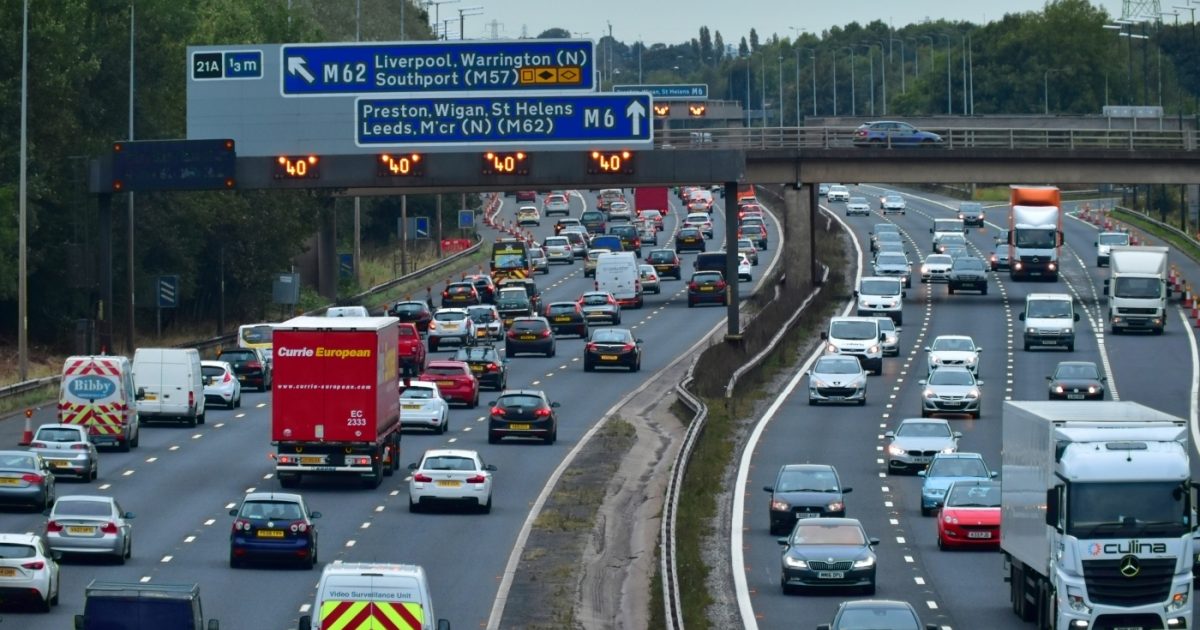Fuel duty has been frozen for the 13th year in a row. When will the government abandon this regressive, environmentally damaging policy?
The spring budget saw the chancellor freeze the rate of fuel duty for the 13th year running, a decision backed by both major parties. But the decision’s popularity with politicians does not reflect its popularity across civil society. The policy is widely regarded as economically inefficient and environmentally damaging.
Freezing fuel duty at the level introduced last year (reduced by 5p) means a real-terms cut to how much of their disposable income drivers are spending on fuel, given inflation and wage growth. The net result of this freeze is likely to be an increase in the public’s consumption of fuel and, in turn, an increase in polluting carbon emissions.
At NEF, we’ve conducted analysis which has found that the likely increase in household fuel consumption over the next year will result in 3.4 to 3.9m additional tonnes of carbon dioxide being released into the atmosphere. This is equivalent to adding between 2 and 2.3m more cars to UK roads for a year. When compared to 2021, this increases road transport emissions by between 3.4% and 3.9%.
One comparison in particular shines a light on the inconsistency of this carbon-pumping announcement. Documents released alongside the spring budget reveal that, at the same time as it was making this £6bn investment into high-carbon fuel consumption, this government was receiving almost exactly the same amount — £6bn — from its carbon taxation mechanism, the UK Emissions Trading Scheme. We are taxing carbon with one hand and discounting it with the other.
To risk this exceptional increase in emissions in the midst of a climate emergency, the policy must have a compelling economic case. But it does not. We’ve found that, of the £3.4bn in fuel duty savings that households will make over the coming year, £2.2bn (or 64%) will accrue to households in the top 50% by equivalised income, while only £1.2bn (36%) will accrue to the bottom half. That’s almost two-thirds of savings going to the richest households, and just above a third going to the poorest.
During his speech the chancellor suggested that individual households would benefit to the tune of £100, but this is not true of households in the bottom 40% by income. Indeed households in the bottom 10% of income will only benefit by £55, and of course, any house without a car (which are far more prevalent in the lower income groups) will receive no direct benefit. Meanwhile, the top 10% of households will save £155.
It is true of course, that businesses will also save money, and that to some extent this may filter through into reduced prices. But if the recent epidemic of ‘greedflation’ is anything to go by, many businesses will not pass this saving onto consumers. We have already seen how some retailers at the pump have not fully passed on the fuel duty cut over the last year. Regardless, the question to be resolved is not whether support should be provided to households to help manage higher prices. The question is: what is the most effective mechanism for doing so? If, for example, the £6bn invested in the fuel duty freeze had instead been used to make a one-off flat cash payment to every household, every house would benefit to the tune £220. And such a policy would be far more progressive in its distribution, as lower-income households would see their income boosted by a much higher proportion.
Alternatively, we could look to other forms of transport-related support. While petrol costs rose after the Russian invasion of Ukraine, there are signs that they are on the way down. Other public transport prices however, have risen significantly further and faster over the past 13 years of fuel duty freeze. While fuel prices are currently up 23% on Q2 2011, we’ve found that bus fares are up a staggering 76% (even after recent government interventions) and train fares are up 50%. Worse still, just weeks before the government’s decision to put £6bn into cutting fuel prices, it slashed the budget for walking and cycling infrastructure investment by over £200m.
Policies, such as capping of bus fares, have been shown to be highly effective. In Greater Manchester for instance there has been a jump of 1.5m passenger journeys within just three months. More investment in public and active travel would benefit all of us, would provide much more to lower-income households, and would cut carbon emissions.
Methods: Two methods were used to calculate the carbon emissions resulting from the fuel duty freeze. The first (i) involves using the ONS Living Costs and Food Survey data to calculate the total value of the freeze assuming no demand response (i.e. no increase in fuel consumption) and comparing this estimate to that provided by the OBR and Treasury, which includes a demand response. The difference provides an indication as to the total increase in fuel consumption expected by the government which can then be converted into its equivalent emissions. The second (ii) method involves using price elasticities of demand derived from a paper by Professor David Begg and Claire Haigh to independently arrive at the demand response to the price change. Again, this demand response can be converted into emissions using simple metrics. The two approaches lead to similar conclusions, a rise in CO2 emissions of 3.9m tonnes (i) or 3.4 m tonnes (ii).
Image: iStock


